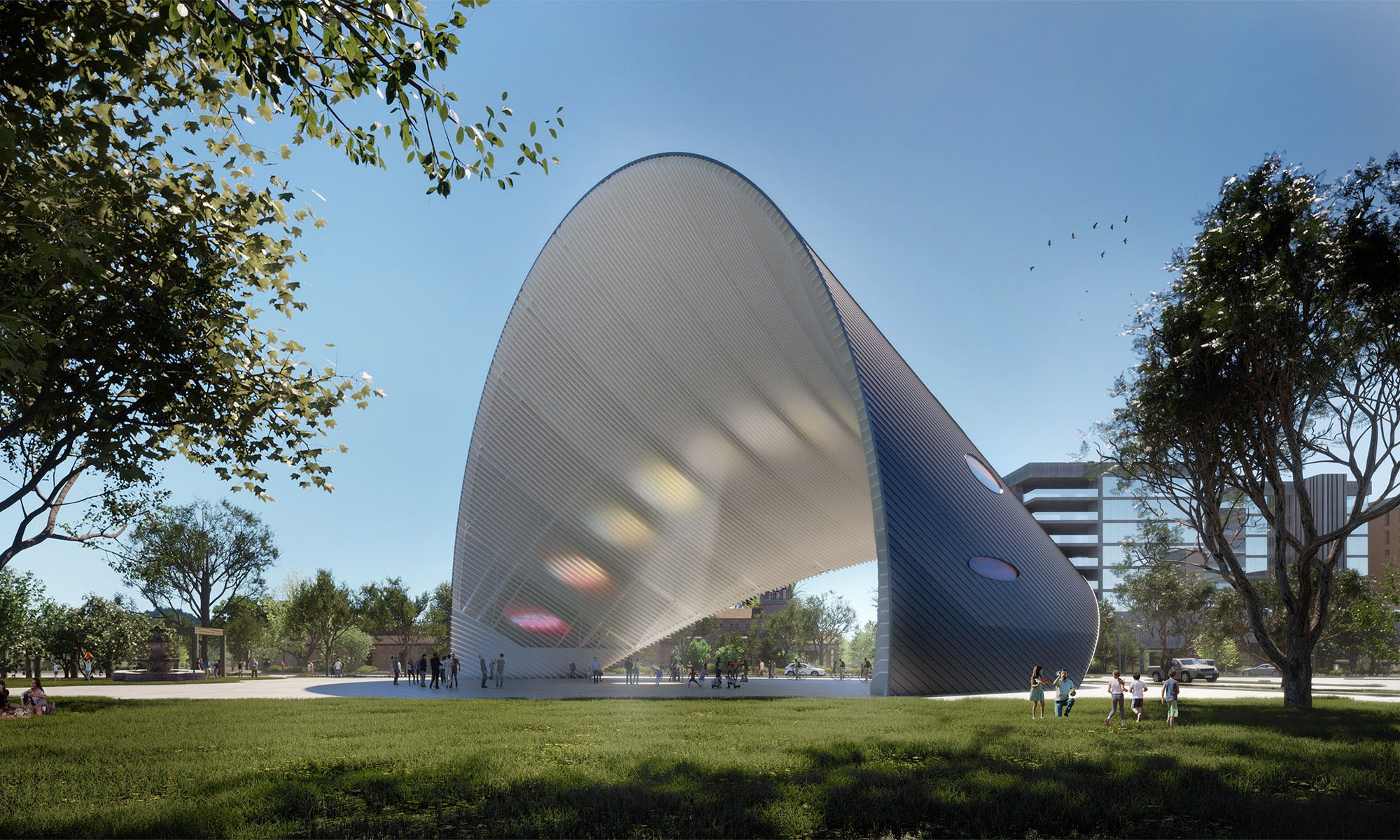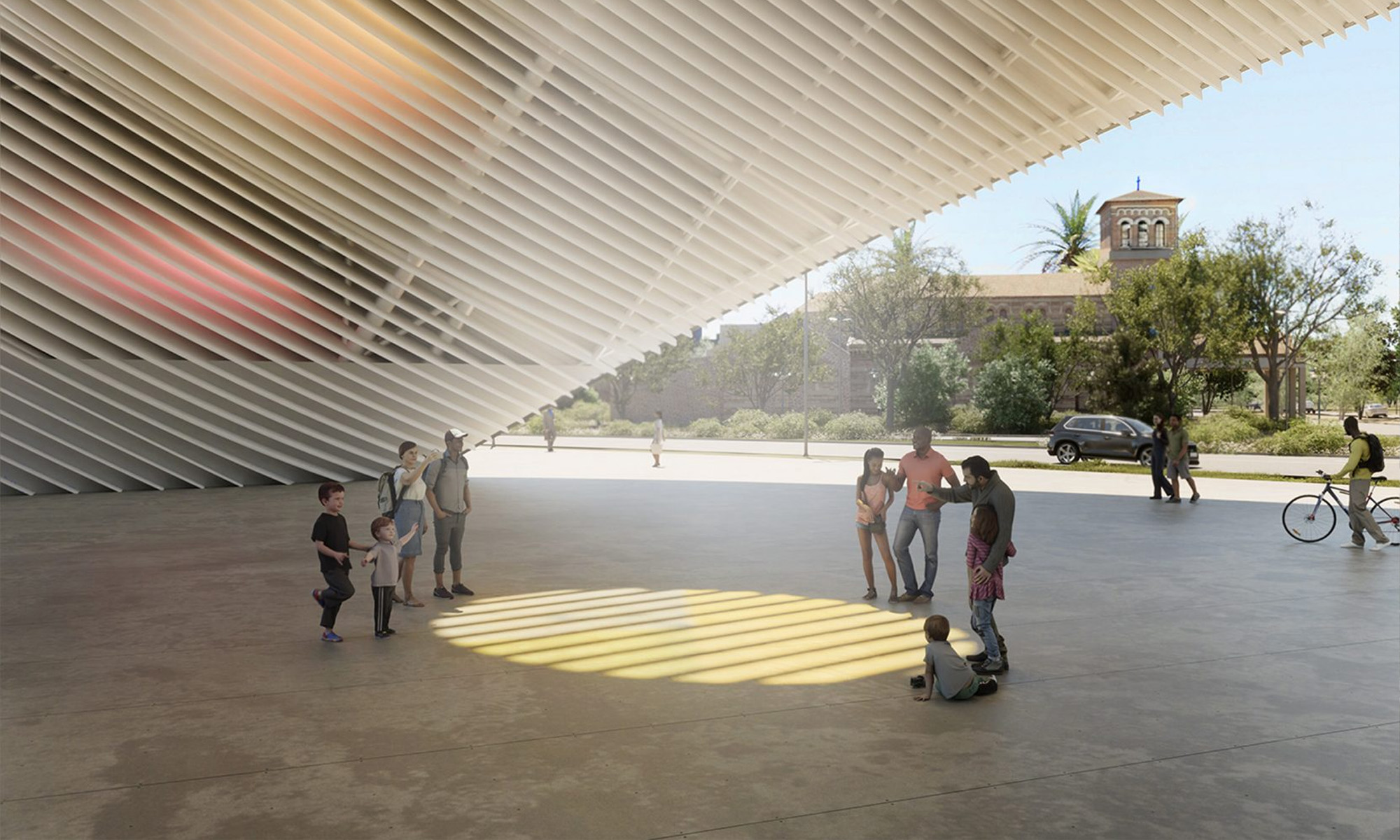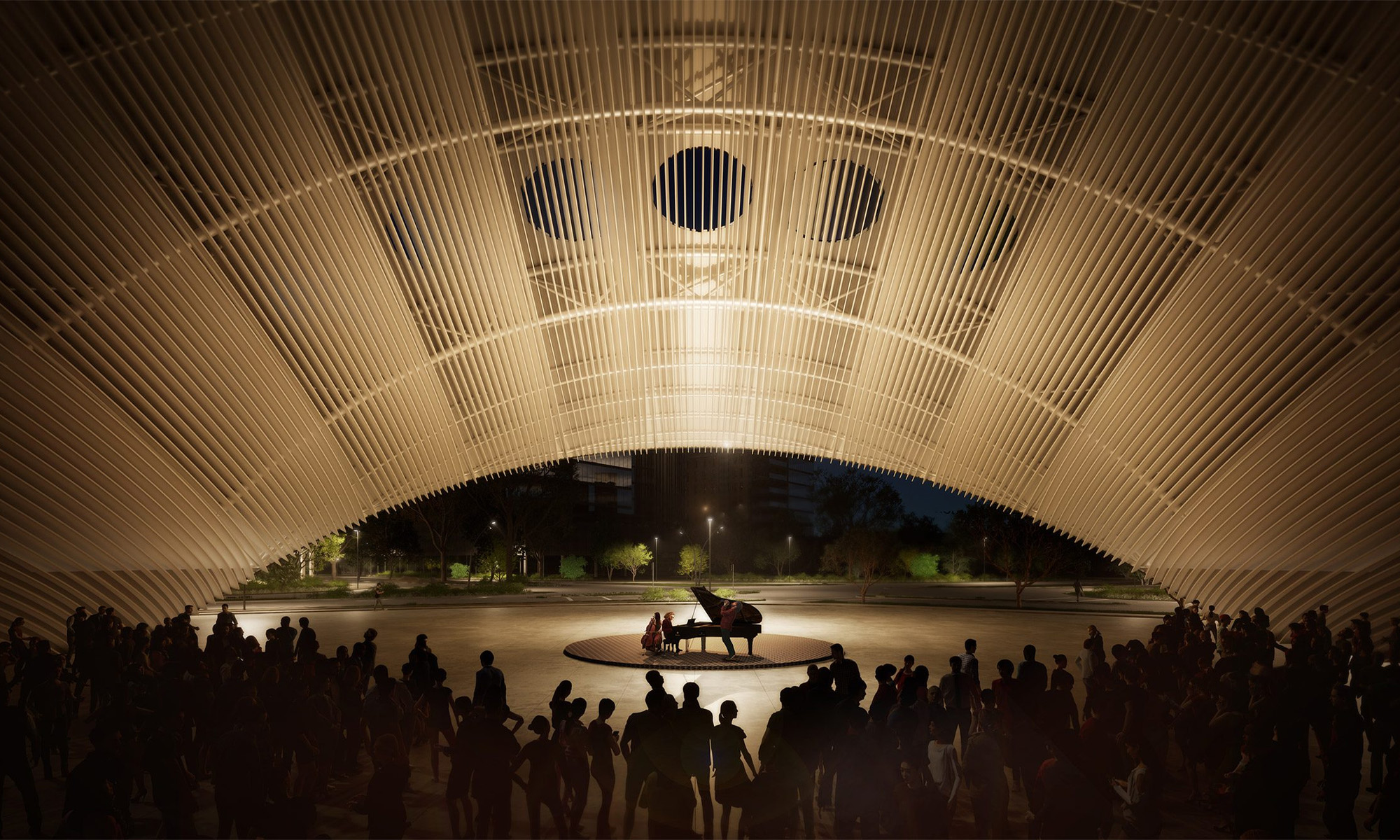News
Abu Dhabi-Backed Tech Sculpture To Be Installed In Houston
Created for the LAGI 2019 design competition in Abu Dhabi, the high-tech installation will double as a renewable power plant.

“The world’s largest sundial”, designed by Berlin architect Riccardo Mariano, is set to be installed in the city of Houston, Texas, in the city’s East End neighborhood in 2024.
The project was made possible by the Land Art Generator Initiative partnership with Masdar City, an Abu Dhabi urban development dedicated to creating sustainable cities and lifestyles. For those unaware, Houston, Texas, is twinned with the capital of the United Arab Emirates, hence the connection.

The 30-meter-tall sundial will be known as the Arco del Tiempo (Arch of Time) and functions as an interactive clock, casting sunlight onto the surface of Guadalupe Plaza Park. The installation’s geometry, carefully designed according to Houston’s latitude and longitude, is accurate throughout the seasons and hours of the day.

However, the Arco del Tiempo is far more than just a sculpture. The project will also serve as a renewable energy power generation plant. The finished arch will incorporate solar modules on its south-facing side, generating around 400 megawatt-hours of electricity annually — the equivalent energy consumption of 40 local homes.
Also Read: Kuwait Bans Cryptocurrencies, Putting An End To Virtual Assets
“It was a pleasure to be part of the LAGI competition in 2019, and we’re very excited to see the winning entry come to life—particularly in Abu Dhabi’s sister city,” said Chris Wan, Associate Director of Sustainability and Corporate Social Responsibility at Masdar City. “We know that public art plays a significant role in the fabric of a city, and Arco del Tiempo is so much more than public art: it will also educate the public about sustainability while celebrating and advocating for it. It’s a powerful combination. I hope to see more art like it in the cities of the future”.
Over its lifetime, the Arco del Tiempo is projected to generate over 12 million kilowatt-hours of renewable energy, effectively removing 8,500 metric tons of CO2.
News
Google Releases Veo 2 AI Video Tool To MENA Users
The state-of-the-art video generation model is now available in Gemini, offering realistic AI-generated videos with better physics, motion, and detail.

Starting today, users of Gemini Advanced in the MENA region — and globally — can tap into Veo 2, Google’s next-generation video model.
Originally unveiled in 2024, Veo 2 has now been fully integrated into Gemini, supporting multiple languages including Arabic and English. The rollout now brings Google’s most advanced video AI directly into the hands of everyday users.
Veo 2 builds on the foundations of its predecessor with a more sophisticated understanding of the physical world. It’s designed to produce high-fidelity video content with cinematic detail, realistic motion, and greater visual consistency across a wide range of subjects and styles. Whether recreating natural landscapes, human interactions, or stylized environments, the model is capable of interpreting and translating written prompts into eight-second 720p videos that feel almost handcrafted.
Users can generate content directly through the Gemini platform — either via the web or mobile apps. The experience is pretty straightforward: users enter a text-based prompt, and Veo 2 returns a video in 16:9 landscape format, delivered as an MP4 file. These aren’t just generic clips — they can reflect creative, abstract, or highly specific scenarios, making the tool especially useful for content creators, marketers, or anyone experimenting with visual storytelling.
Also Read: Getting Started With Google Gemini: A Beginner’s Guide
To ensure transparency, each video is embedded with SynthID — a digital watermark developed by Google’s DeepMind. The watermark is invisible to the human eye but persists across editing, compression, and sharing. It identifies the video as AI-generated, addressing concerns around misinformation and media authenticity.
While Veo 2 is still in its early phases of public rollout, the technology is part of a broader push by Google to democratize advanced AI tools. With text-to-image, code generation, and now video creation integrated into Gemini, Google is positioning the platform as a full-spectrum creative assistant.
Access to Veo 2 starts today and will continue expanding in the coming weeks. Interested users can try it out at gemini.google.com or through the Gemini app on Android and iOS.





















